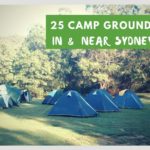Walk down onto the sand at the western end of Jibbon Beach, Bundeena, there’s a sign saying “Royal National Park, A Dharawal Place”. But what is a Dharawal place? Dharawal were the Aboriginal people that lived in southern Sydney. What makes here any more Dharawal than the developed suburb of Cronulla across the water?
The difference is Jibbon has one of coastal Sydney’s oldest Aboriginal sites: the remains of a 3000 year old shell midden.
What is a midden?
A midden is a pile of shells, stone tools, bones and ash from cooking fires. It is the remains of generations of feasting, and is basically the kitchen bin. For this reason, it’s sometimes called a ‘kitchen midden’.
What is in this midden?
We know what Dharawal people ate from the remains archaeologists found in this midden. It gives us an insight into their seafood-rich diet.
The predominant shells found in this midden are;
- Sydney rock oysters – badangi or dotang in Dharawal
- mud oysters – dainya
- hairy mussels – dalgal
- Sydney cockles – gadyan.
It also contains bones from fish including;
- snapper – wallumai
- dusky flathead – kowari
- black bream – garuma or yerrermura
- yellowtail kingfish – barung.
Archaeologists also found bones from land mammals;
- swamp wallaby – banggarai
- ring-tailed possum – burumin
- goanna – jindoala
- diamond python – malya
Although most burials took place in sacred places away from campsites, middens were occasionally used for burial. The Jibbon midden contains human bones and is a protected site. Please respect this by keeping outside the fence.
How do we know how old it is?
Archaeologists have carbon dated the remains in this midden to 3,000 years old – around the time of Cleopatra in Ancient Egypt.
Let’s put that time frame into context. It has been proven that Aboriginal people have been in Sydney for about 20,000 years, but finding evidence right on the coastline is a bit trickier. Back then, the sea level was more than 100m lower and the coastline up to 15km further east than it is today. So evidence dating back to the last ice age is likely submerged under the ocean.
A site at Curracurrang, a day’s walk south of here on the Royal National Park Coastal Walk, has been dated to at least 8,000 years old. We’re not sure why there’d be such an age difference between the two sites, but big seas at Jibbon still have the power to wash away much of the back of the beach, where the midden is located.
What else do middens tell us?
Although mostly seen as a rubbish pile, they served other purposes:
Signpost:
This midden was a marker for other family groups. Dharawal people, like all Aboriginal people, were nomadic within their tribal lands. If a family group came across a midden with a covering of freshly shucked oyster shells, they would know the previous family had eaten oysters. They would not harvest oysters so this food source was sustained.
Windbreak:
On the other side of this midden is a lagoon that would have provided the perfect campsite – sheltered from the wind and next to fresh water. This is no accident. This midden was carefully created over generations to create a windbreak from the nor’westers of the early morning and the nor'easters and southerlies of the afternoon. Regardless of wind direction, this midden provided shelter.
What happened to all the shells from this midden?
Sydney’s shoreline was dotted with Aboriginal shell middens up to 100m high and several hundred metres long. This midden stretches the entire length of Jibbon Beach and was once much higher than it is today.
To Europeans, middens represented a way to build with stone.
Shells from Aboriginal middens formed the mortar that glued Sydney’s first stone buildings together. European settlers sailed down from the colony at Sydney town with boats laden with stone ballast. They jettisoned the stone overboard and re-filled the hold with tonnes of shells from middens, just like this one. The shells were taken back to the colony and cooked in a kiln to create lime. This lime was mixed with more shell grit, creating mortar to bind together sandstone blocks. In this way modern Sydney got stone dwellings and Aboriginal middens were decimated.
Interestingly, on maps 4km west of Jibbon, in the water just beyond Deeban Spit (djeebahn – a Dharawal word meaning sandbar at low tide) is a black mark titled “Ballast Heap” showing a “rock, bare or awash”. It is literally a pile of stone ballast tossed overboard from a ship into the water. A lasting reminder of the culture clash that Sydney witnessed from 1788.
Today, the way to discern a genuine colonial building is the presence of shell grit in the mortar. The best examples are Cadmans Cottage at Circular Quay and Reynolds Cottages at 28-30 Harrington St, The Rocks, built in 1816 and 1830 respectively.
Middens Now
As you walk around Sydney’s foreshores keep an eye out for middens, they are everywhere. The telltale signs are sun-bleached white shells, sometimes whole but more often crushed, in areas near fresh water. They might be in a half-buried mound or lining both sides of a creek that spills onto a beach. Aboriginal people camped near drinking water and their middens are near their campsites. Middens are just another reminder that life thrived here for thousands of years before European arrival.



